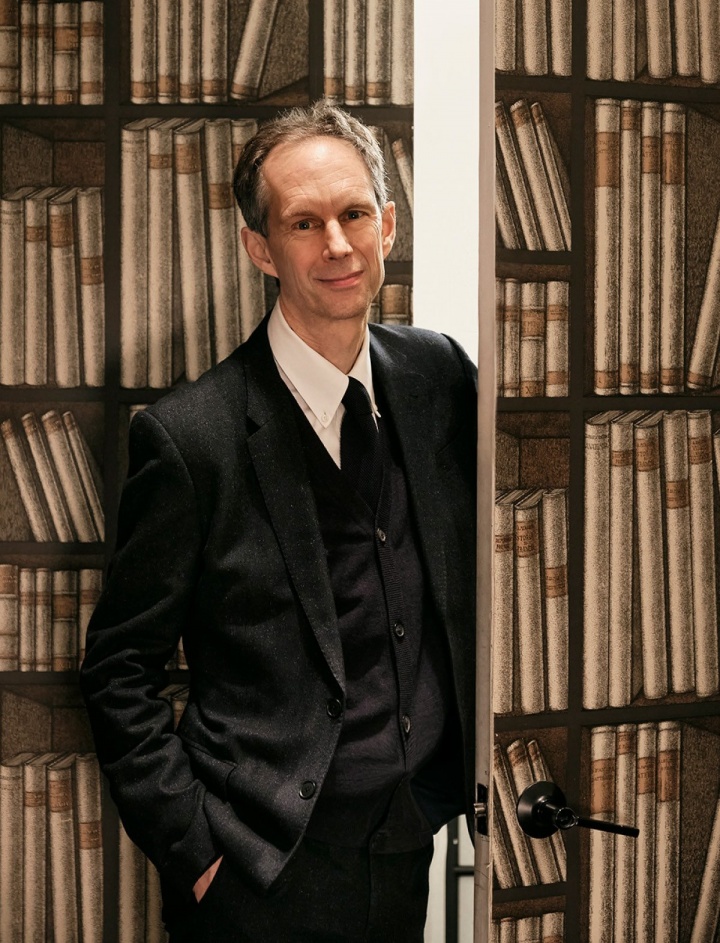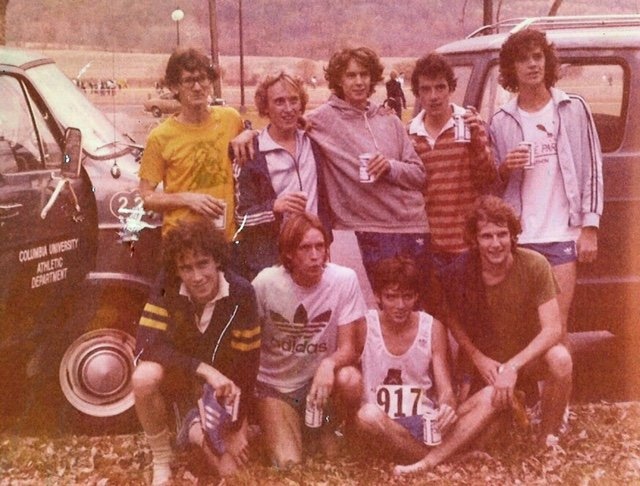Columbia College | Columbia University in the City of New York
The Boss of Beautiful Books

Christophe von Hohenberg
People are always asking Charles Miers ’80 what his favorite book is.
As the longtime publisher at Rizzoli New York, books are his business. Miers is responsible for the acquisition and editorial direction of all volumes published under the Rizzoli and Universe imprints, now some 175 books a year. During his 29-year tenure, Miers has dramatically expanded Rizzoli’s program of books in art, design, fashion, photography and contemporary culture, while maintaining the company’s roots in contemporary and historic architecture. In May, The Institute of Classical Architecture & Art honored Miers and Rizzoli with a 2020 Arthur Ross Award for Excellence in the Classical Tradition.
With such a luxe and extensive collection — even the Spring 2020 catalog features a glamorous Mert and Marcus photo of model Kendall Jenner on its cover — it’s not surprising to hear that Miers can’t choose a favorite. “These books are like my children,” he says. “I could tell you a story about every one we’ve published.”
Miers was a double major at the College; his studies of history and art history make him an expert storyteller. He grew up in England and spent his youth at boarding schools; he wanted something different for his college years, and New York City in the late 1970s was definitely that. “It was an adventure,” he says. “The sense of physical danger was ever-present. But as a student you could block a lot of that out.”

Miers (standing, center) with the cross-country team after winning the Ivy League championship in 1979.
COLUMBIA DAILY SPECTATOR
The day he graduated, Miers went to work for a “tiny and idiosyncratic” publisher, George Braziller, which specialized in contemporary fiction and nonfiction. “It was too small a place to stay forever but I learned everything there,” Miers says. “Most of all, George really taught me to love books as physical objects and understand how they were made. That has very much stayed with me.” Miers next worked for five years at Abrams, then joined Rizzoli in 1990.
In those days Rizzoli was thought of as the greatest architecture publisher in the world. “If I can say where I’ve really made a difference, it’s that we’ve become a major force in fashion and interior design,” Miers says. “Our first fashion milestone was Tom Ford’s book in 2004; it was his Gucci story. And around the same time, fashion designers embraced ‘The Book’ in the same way that architects did — if you went into any architecture office in those days there was a large library. Fashion designers embraced books as something permanent in a very ephemeral world, which fashion very much is.”
He continues, “After the financial crash of 2008, interior design became especially strong for us, somewhat counterintuitively. I think to some extent people were turning inward and thinking about their homes, and that will happen again now. People will also embrace ‘artisanal’ even harder,” he says.
On deck for Rizzoli this fall is a book by model Lily Cole, Who Cares Wins, about issues of sustainability and climate change, how young people should think about those things and what values they should consider. Like Miers, Cole is an art historian by training, from Cambridge. “She has a lot of credibility for activism, and that’s a book we think will have resonance,” Miers says. “It’s subtitled Reasons for Optimism in a Changing World — I mean, come on.”
Book publishing may have diminished over the years as digital media has become more prevalent, but Miers isn’t worried. “I believe that the more digital we’ve become, the more people value a certain level of craftsmanship,” he says. “People won’t look to books for news or resources or information in the same way, but they’ll look to them for a certain type of gravitas, for a curated quality, for permanence. I think the future of the book is strong. Books like ours will become more bespoke, more expensive, more limited in their availability, and I think that will suit our corner of the industry.”
As for his favorite part of his job? “I’m lucky to spend a lot of time with some of the world’s most creative people,” he says. “A book is really meaningful for them, it’s a moment. Working with these authors is like having a special window into a period of time with someone who’s a hero of yours. It’s unbeatable.”
Issue Contents
Published three times a year by Columbia College for alumni, students, faculty, parents and friends.
Columbia Alumni Center
622 W. 113th St., MC 4530, 6th Fl.
New York, NY 10025
212-851-7852
cct@columbia.edu
Columbia Alumni Center
622 W. 113th St., MC 4530, 4th Fl.
New York, NY 10025
212-851-7488
ccalumni@columbia.edu

